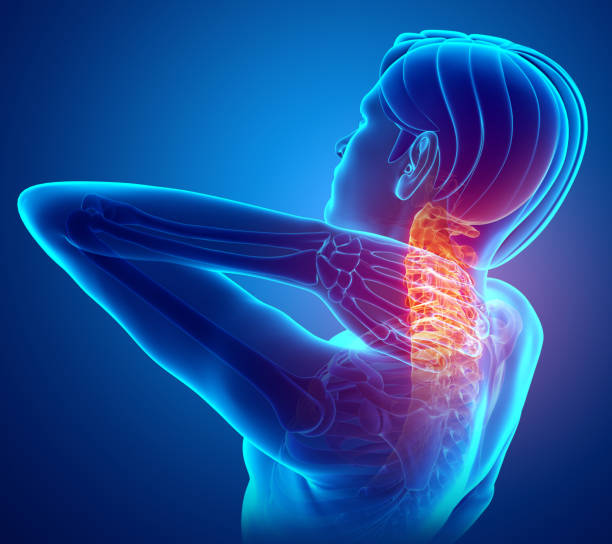Neck Pain

Have you been Experiencing Neck Pain?
It is common to experience pain at your neck, and/or down your arm. It is also common to experience headaches and/or migraines. In fact, it is estimated that 22% to 70% of the population will experience an episode of neck pain in their lives. Additionally, 10%-20% of the population reports neck pain at any given time. The neck has many different components including many little joints, discs, muscles, nerves and ligaments.
It is very common when someone starts to experience neck pain, the initial thought is to rest and limit activity. The research and evidence shows that most cases of neck pain can improve rather quickly with the right education and guidance. However, most people wait to seek care until compensations have occurred often making it more difficult to treat. Rest may provide some relief, but introduction of movement early on can help guide the process to reduce the likelihood of compensation and long term changes. A traumatic injury to the neck or surgery will not follow this typical progression and may be required to be immobilized for a period of time, although these instances are a small percentage of neck pain.
Many people will even try taking an anti-inflammatory, and get short term relief, but again are left frustrated when improvement is not maintained. This does not have to be your experience. After a visit to their primary care provider, an individual may be prescribed a stronger anti-inflammatory, pain medication, or a muscle relaxant. We know that there is a place for these interventions, but long term use can have a negative impact on one’s health.
Physical therapy can help reduce the likelihood of reliance on medications, injections, and surgery.
Common Complaints from People with Neck Pain
When one develops neck pain, there can be many different reasons why.
Some common complaints include:
- Difficulty with sleep
- Significant stiffness/loss of motion when turning neck
- Pain/numbness/tingling down arm and into the fingers
- Pain in the shoulder blade and upper back
- Headache with pain at the forehead and side of head
- Stuffiness in the ear
- Discomfort behind eye
- Feelings of anxiety and nausea
- Signs of fatigue, affected vision, affected concentration
Do you feel that you may just have to live with the pain and are hoping that it will go away on its own, or hope that it won’t affect the activities you love, such as reading, spinning, or taking a road trip?
What Causes Neck Pain?
Neck pain can be caused by many different things. Disc herniations are common and can get result in numbness and tingling down the arm when the nerve is also irritated. Smaller joints at the neck known as facet joints can become inflamed and irritated resulting in limited range of motion at the neck and can often feel like pinching or stabbing when provoked. Headaches and migraines can be a result of increased tension and irritation of the muscles at your neck and upper back. A car accident can result in a whiplash resulting in weakness of the muscles at the neck. A proper assessment by a physical therapist can help to determine what the issue with your neck may be.
Common Neck Pain Diagnoses:
- Cervicalgia (generalized neck pain)
- Spondylosis/Spondylolisthesis
- Facet Joint Pain
- Cervical Spinal Stenosis
- Cervical disc disorders including herniation
- Cervical Radiculopathy
- Cervicogenic headaches
- Migraines
How can my Neck Pain get Better?
Your physical therapist performs an assessment to determine the cause of symptoms and identifies your limits in range of motion and strength. It is common for assessment to include looking at not only your neck, but also your upper back, shoulder, elbow, and hand. These findings and thorough discussion with you will determine what things are difficult for you to perform and a plan of action is put together. Physical therapists treatment is tailored to each individual’s needs witht the main focus being to find the correct safe exercises for you to perform to improve your pain and function. Hands on treatment such as joint mobilization (movements that guide your joint motion), and soft tissue work help to guide the recovery process. In some situations, other modes of treatment such as electric stimulation, cupping, taping, etc. can also help to guide the process forward. The goal is to decrease inflammation, improve your motion, improve your strength, and improve your function.
Are you Tired of Dealing with Neck Pain?
We know that you may be hesitant or skeptical about physical therapy, and that is okay. We will customize a neck pain treatment plan just for you. We will work in an effective way to help you achieve your goals. If you would like to contact us, we suggest you to the contact us page and call, text, or send us a message.
We have helped many people recover from neck pain and have helped them get back to the activities that they love!